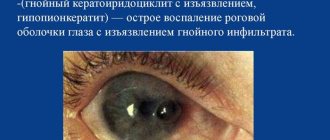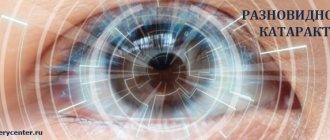The effectiveness of correction for farsightedness
With hyperopia, vision is corrected with laser less often than with myopia. The reason is the need to correct the curvature of the cornea, changing its shape and giving it a more curved appearance. This is more difficult to implement than corneal flattening to treat myopia.
This type of correction is prescribed for low-grade disease development. And in other cases, experts recommend other types of surgical intervention. The most common are thermal keratoplasty and intraocular lens implantation, which replace the functions of the human lens.
The advantages of laser correction include:
- convenience;
- stability, long-term results;
- no pain during the procedure;
- no hospitalization;
- no complications or side effects;
- speed of the operation (it takes about 5 minutes to correct each eye);
- fast recovery.
Indications for surgery for farsightedness
Before the operation, a person must undergo an examination by an ophthalmologist, an ENT doctor, and also a therapist. Based on the reasons for the development of the disease, the ophthalmologist draws up an eye map and prescribes additional examinations in the form of tests (blood, urine, for the presence of viruses and infections). This material will tell you about zero glasses for image.
Surgical intervention is an effective method of vision correction.
The operation is carried out as follows:
- The man lies down on the couch and is given sedatives.
- An eyelid holder is inserted into the eyelid.
- The surgeon, using a diamond knife and other instruments, corrects the surface layer of the cornea under a microscope.
- Potent drops are instilled into the person.
Methods
There are several methods of performing the operation. The most common are LASIK, PRK and LASEK.
LASIK (Laser-Assisted in Situ Keratomileusis)
In Russia, this popular correction method is called “laser keratomileusis”. It is prescribed to improve visual functions in cases of myopia, astigmatism, and hypermetropia. The method is used for minor impairments of refractive functions and is not recommended for high degrees of farsightedness.
In terms of effectiveness, the method is similar to PRK, but the difference is that after the operation the pain syndrome is less pronounced, and visual functions are quickly restored.
The cost of the operation varies from 20,000 to 50,000 rubles. The price depends on the complexity of the specific case.
PRK (Photorefractive keratectomy)
This method allows you to correct the curvature of the cornea using a laser.
Although the corneal flap does not need to be cut, the process can be painful. After surgery, it is important to follow a special regime, since regeneration and recovery are slower than with other laser correction methods. The price for the procedure is from 15,000 rubles.
LASEK
During surgery, the cornea is softened with alcohol. After this, its curvature is corrected with a laser and the surface layer is replaced. Price – from 20,000 to 40,000 rubles depending on complexity.
In addition to these basic methods, there are advanced types of LASIK laser correction:
- Super LASIK. This method is called “personalized LASIK.” A thorough detailed examination is carried out before the operation. The excimer laser is adjusted more precisely, individually for each patient. This increases the efficiency of the procedure. Cost - from 30,000 rubles.
- Femto Super LASIK. The difference between this type is that the corneal flap is formed not with a microkeratome, but in a non-contact manner - using a femtosecond laser. This increases accuracy, which has a positive effect on the result of the operation. Price - from 50,000 rubles.
Laser surgery
Unlike glasses or contact lenses that change the focal length, laser correction changes the refraction of the eyes. Therefore, after it is carried out, additional means of improving vision are not required.
The operation involves applying a laser to the surface of the cornea, while maintaining its transparency and shine. The procedure takes place without pain, discomfort and blood.
Does not require special recovery time.
Laser correction is indicated for people intolerant of optical correction devices and unable to wear them due to their profession. And also for those who simply want to live with good vision. Today, surgery to correct farsightedness is carried out using three main technologies:
- LASIK. LASIK – laser keratomileusis. A flap is formed from the cornea, which is moved to the side for laser exposure, and then returned to its place. Vision returns to normal in about a week.
- REIC. REIC – refractive-corrective excimer laser intrastromal keratectomy. The operation is an advanced LASIK. The corneal flap is placed in a special way, which makes it possible to achieve high visual acuity even in difficult situations. Normalization of vision occurs in about two days.
- LASEK.
LASEK – laser subepithelial keratectomy. A layer of the cornea is separated in the form of a flap and, after laser treatment of the epithelium, it is returned to its place. After the procedure, the eye is protected with a soft contact lens (SCL). The epithelium is completely restored within a few hours. The eyes are operated on separately with an interval of 4-7 days. Vision returns to normal after three weeks.
After REIK and LASIK, the first hours may include discomfort, lacrimation, burning and photophobia. This goes away in about six hours.
The first day you should not touch the operated eye(s). You need to take antibiotics for a week and artificial tears for a month.
You can't drink alcohol. For the first two weeks, it is not advisable to communicate with people who have colds, get hypothermic, use cosmetics, or visit saunas, steam baths and swimming pools.
After LASEK, the eye is protected by SCL for four days. Within a week you need to drip antibiotics and put in a gel.
After surgery, the eye may hurt, and there may also be a feeling of a foreign body in it, a burning sensation, or photophobia. It goes away in two days.
For the first two weeks, you should not rub or press on your eyes; you need to wash your face carefully. It is recommended to limit physical activity to persons who have undergone laser photocoagulation of the retina.
The period of restriction is determined by a specialist. Visual acuity is restored within two weeks.
In case of redness of the eyes, discomfort or decreased vision, you should immediately contact the medical center where the operation was performed.
Contraindications, advantages and disadvantages
Laser correction has such advantages as relative safety, minimal complications, absence of scars and stable refraction. As well as painlessness and prompt restoration of vision - within 2 hours. Perhaps the only drawback is the correction of hypermetropia no more than 6 D. Higher degrees are corrected using FCL implantation.
Learn about the most common eye diseases in detail and visit the operating room - video.
This is a laser eye surgery using an excimer laser, which non-contactly acts on the surface layer of the cornea, removes it by ablation (evaporation), as if “smoothing” and “modeling” the surface to achieve a refractive effect by changing the curvature of the outer surface of the cornea without affecting other eye structures.
Operating in scanning mode, the excimer laser is controlled by a computer program, which eliminates the human factor in the course of the photorefractive keratectomy operation. PRK is not an operation in the usual sense, because the surgeon does not directly interact with the tissues of the human eye.
As a result of laser surgery using the PRK method, microerosion is observed on the surface layer of the cornea, healing of which occurs in 24-72 hours with the formation of a new optical curvature.
The process of epithelization of the new corneal surface after photorefractive keratectomy (PRK) is felt by the patient as a foreign body in the eye, pain and pain, photophobia and profuse lacrimation.
It is easier for the operated patient to stay in a darkened room; the recovery period itself is 3-4 days and the need to instill drops remains for 1-3 months. The possibilities of using the laser PRK method are limited in laser correction of high-grade anomalies.
Operations using the PRK method. Benefits of photorefractive keratectomy
If a cataract is detected, PRK does not make sense, because immediately after its removal, the refraction of the eye can be corrected using an artificial lens.
The PRK method has been widely used for more than 10 years, but the ongoing search for more effective applications of laser refractive surgery indicates that the PRK method does not fully “satisfy” the wishes of the ophthalmic client.
Laser eye surgery PRK (photorefractive keratectomy) for myopia, farsightedness, astigmatism. PRK price (Moscow)
- LASIK. LASIK – laser keratomileusis. A flap is formed from the cornea, which is moved to the side for laser exposure, and then returned to its place. Vision returns to normal in about a week.
- REIC. REIC – refractive-corrective excimer laser intrastromal keratectomy. The operation is an advanced LASIK. The corneal flap is placed in a special way, which makes it possible to achieve high visual acuity even in difficult situations. Normalization of vision occurs in about two days.
- LASEK. LASEK – laser subepithelial keratectomy. A layer of the cornea is separated in the form of a flap and, after laser treatment of the epithelium, it is returned to its place. After the procedure, the eye is protected with a soft contact lens (SCL). The epithelium is completely restored within a few hours. The eyes are operated on separately with an interval of 4-7 days. Vision returns to normal after three weeks.
In case of redness of the eyes, discomfort or decreased vision, you should immediately contact the medical center where the operation was performed.
- Age up to 18 years, since only by then the visual system is fully formed.
- Pregnancy and lactation.
- Retinal dystrophy (surgery is performed after its strengthening).
- Inflammation of the eyes (surgery is indicated after healing).
- High degree of amblyopia.
- Acquired cataracts, glaucoma and keratoconus.
- Optic nerve dysfunction.
- Insufficient corneal thickness.
- Diabetes.
- Retinal detachment.
- Connective tissue diseases.
- One seeing eye.
Most often, laser vision correction is recommended for the treatment of farsightedness up to 4 diopters. since this intervention is the safest.
A positive result is achieved by removing part of the cornea according to an individual scheme. The laser beam vaporizes tissue to a strictly measured depth, usually in the range from 130 to 180 microns.
The duration of the operation does not exceed 30 minutes, the intervention is carried out using local anesthetic drops.
Contraindications for surgery
There are several contraindications in which surgical intervention using a laser is prohibited or not recommended:
- certain working specialties (pilots are sometimes prohibited from such operations);
- engaging in extreme and traumatic sports that can cause head injuries (martial arts, football, hockey and others);
- diseases and conditions that affect the operation process;
- reduced immunity (increases the risk of complications);
- pregnancy (affects vision clarity);
- diabetes mellitus (affects vision clarity)
- taking steroids;
- eye diseases (glaucoma, inflammatory processes, keratoconus, herpes infection)
- previous eye surgery.
Phakic lens implantation
Phakic lens implantation (IOL) involves placing an additional diverging (“positive”) lens directly onto the lens, which focuses light rays entering the eye onto the retina. Usually, phakic lens implantation is carried out at a young age and with large degrees of hypermetropia, which cannot be corrected by excimer laser vision correction. The IOL is implanted into the eye cavity through a puncture, without suturing. The biocompatibility of the lens material minimizes the risk of complications. The operation and postoperative period are painless, vision improves within a few hours after the intervention. The advantages of this operation include, among other things, the possibility of removing the lens, that is, returning the eye to the preoperative state.
If there is opacification in the lens due to hypermetropia, the lens is replaced for refractive purposes. This operation is similar to that performed for cataracts. Currently, when carrying out such an intervention, the method of phacoemulsification, or crushing the lens using ultrasound, is used. The natural lens is removed through a 2-3 mm puncture, and a soft artificial lens is implanted in its place, designed in such a way that the patient no longer needs distance correction. And recently, a number of large manufacturers have developed and are introducing multifocal artificial lenses, which allow one to see well not only near or far, but to combine sufficiently high vision for both near and far. This happens due to the fact that each such IOL has several focal lengths. True, quite often the patient needs to get used to such a correction.
The choice of tactics for surgical treatment of farsightedness is strictly individual and is determined based on the results of a complete ophthalmological examination. Since refractive surgery is the method of choice, the decision to undergo correction is made by you. We will help you find your way - recommendations depend on your age, general health, existing or pre-existing eye problems, your glasses or contact lenses, lifestyle, profession, work goals and the results you expect from the operation.
Limitations after laser correction
The postoperative period is often accompanied by unpleasant sensations that go away on their own after some time. The most common effects: uncontrollable lacrimation, foreign body sensation, inflammation, photophobia.
The severity and duration of these effects are affected by the individual characteristics of the organism. Most often they go away within one month.
To reduce the risk of complications and speed up recovery, you must follow some rules:
- do not rinse, scratch, or touch your eyes for 3 days after the procedure;
- do not visit water parks, swimming pools, saunas, or swim in ponds;
- wear sunglasses outside;
- do not stay in the sun for too long;
- exclude any physical activity, avoid overexertion;
- do not use cosmetics;
- do not drink alcohol;
- no smoking;
- avoid smoky rooms;
- do not take any medications without consulting a doctor;
- do not overload your eyes, reduce the time you spend reading, watching TV and sitting at the computer;
- Pregnancy is not advisable for six months after surgery.
In addition, you must follow all the recommendations prescribed by your doctor, follow the instructions, and use medications prescribed by a specialist. This speeds up corneal recovery and prevents complications.
Prevention of farsightedness
Prevention of farsightedness is, first of all, compliance with the rules of visual hygiene, which include:
- use of sufficient and uniform desktop lighting;
- maintaining the correct mode of visual work;
- performing special visual gymnastics exercises.
You can learn more about how to maintain the health of your eyes, and also, if necessary, receive treatment recommendations by consulting an ophthalmologist and undergoing a thorough vision diagnosis using high-precision computerized equipment.
It is impossible to say whether farsightedness is a plus or a minus. This is a deviation from the norm that needs to be controlled and corrected in order to maintain life at a normal pace.
When treating farsightedness, it is always necessary to include in this process the intake of various vitamin complexes.
Dietary supplements containing vitamins A, B, C, E, and folic acid will be very useful. It will also be useful to eat preparations containing zinc, copper, selenium, and manganese. All of them help maintain the tone of the muscle fibers of the organs of vision and prevent the formation of free radicals.
Other solutions for correcting farsightedness
If there are contraindications to standard laser correction, other effective methods can be used. They have their advantages, in some cases they are even preferable.
The first method is thermal keratoplasty. Exposing the corneal tissue to heat changes its shape and the corneal collagen fibers shrink. In medical practice, two options for carrying out the procedure are possible: non-contact, which is carried out using a laser, and conductive. Keratoplasty is often used to restore vision for presbyopia and astigmatism in patients over 40 years of age.
Another treatment method suitable for high degrees of farsightedness and cataracts is the introduction of intraocular lenses. During this operation, the human lens is replaced with an artificial one. This method is effective and often used, but there is a significant drawback, since the eye loses the ability to accommodate. Another possible side effect is the risk of retinal detachment. The introduction of intraocular lenses is more suitable for elderly patients and patients with reduced accommodative function.
Clinical manifestations, stages and diagnosis
A high degree of farsightedness can lead to the development of a serious disease - glaucoma.
In adults, presbyopia begins when the eyes become tired when reading or working on a computer. For some time, by straining the vision, visibility is compensated, but subsequently the visibility of the text decreases, small letters and objects become indistinguishable, their outlines become blurred, while distance vision is preserved. As a rule, such people go to an ophthalmologist to select glasses for work.
These are just the basic research methods, and today there are many of them, including even an ECG of the eye.
Laser correction of farsightedness is permissible immediately after the growth of the eyeball is completed
Advice: you should not follow advertising, which today offers many “miraculous” remedies for farsightedness: supplements, ointments, training glasses, filters, etc. This is just a waste of time and money. Treatment issues should be resolved only with a specialist.
Video of laser correction
You can learn more about laser correction surgery from the following video. It talks about the features of the procedure and shows the process itself.
Author's rating
Author of the article
Alexandrova O.M.
Articles written
2031
about the author
Was the article helpful?
Rate the material on a five-point scale!
If you have any questions or want to share your opinion or experience, write a comment below.
Is it possible to have a child after using LASIK?
Women who are planning to correct ophthalmological pathology (for example, astigmatism) are interested in: is it possible to give birth after surgery? Pregnancy itself is a contraindication for surgery, as is breastfeeding. If a woman is pregnant and about to give birth, she needs to wait until she finishes breastfeeding.
Pregnancy after laser vision correction is not contraindicated. However, in the first 3 months (and sometimes a little more - you should ask your doctor about this) it is necessary to use protection. The fact is that when healing wounds on the cornea, it is necessary to use antibacterial and hormonal agents, and they can negatively affect the development of the fetus. It is possible to give birth after laser vision correction after the specified period.
Laser vision correction and childbirth are completely compatible concepts. But it is worth remembering that in order to avoid negative consequences, you need to not only postpone pregnancy after correcting the cornea, but also in some cases opt for a cesarean section.
Natural childbirth after laser vision correction can be dangerous, because during contractions the woman in labor experiences very strong tension, which can cause vision loss.
Farsightedness
Farsightedness (hyperopia) is a visual impairment in which a person has difficulty seeing objects located both near and far from him. Farsightedness is very common in children, leading to the development of strabismus, amblyopia and an earlier onset of problems associated with age-related farsightedness (presbyopia).
The problem of correcting farsightedness is successfully solved thanks to refractive surgery. Its founder in the world is academician S.N. Fedorov. Types of operations, devices for performing them, and special high-quality microsurgical instruments are being developed and constantly improved. Accurate calculations based on computer programs make it possible to predict the results of the operation in each specific case. All this allows people with hypermetropia to see the world with their own eyes without glasses or contact lenses.
Our specialists will be able to determine the degree of your farsightedness and choose the most appropriate treatment method.
Doctors at the refractive laser department of the Eye Microsurgery MNTK successfully use various methods for correcting farsightedness.
For hypermetropia up to 6.0 diopters, the most commonly used method is hypermetropic laser keratomileusis using a femtosecond laser (FemtoLASIK) using standard or personalized technology. Hypermetropic FemtoLASIK is also performed in children according to individual indications.
The goal of refractive surgery for hyperopia is to enhance the refraction of the farsighted eye and focus the image on the retina. Each operation has its own indications and contraindications. Taking into account all the examination data, the doctor will choose the optimal operation for your eyes.
Farsightedness may be complicated by amblyopia, impaired binocular vision, or strabismus. It is necessary to begin complex treatment as early as possible, including effects on various parts of the visual analyzer - from the retina to the cerebral cortex, which helps to increase visual acuity and improve binocular functions.
The highly qualified surgeons of the refractive laser department and the use of modern technologies allow us to achieve excellent results in the treatment of patients with farsightedness.









